Freddy Mamani Silvestre's fantastical Andean palaces are full of Bolivian flair
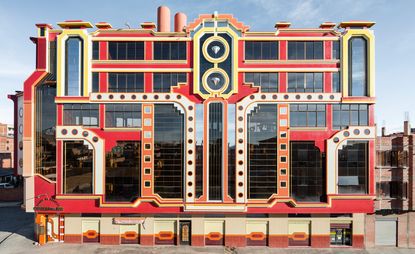
German photographer Peter Granser frames the bold and brilliant architecture of Freddy Mamani Silvestre in a new book, El Alto. This 24-page publication hones in on the pattern, shape and composition of the self-taught architect’s designs, which can be found in his hometown of El Alto, Bolivia.
Mamani’s playful and eccentric style is inspired by the craft traditions of his own indigenous Aymaran culture and the strong masonry of pre-Inca architecture. He has made a name for himself in El Alto, where he has completed more than 60 projects since 2005, all recognisable by their colourful façades, asymmetrical paneling and quirky shapes. His radical art deco meets Las Vegas style couldn’t feel more alien to the rambling architecture of Bolivia’s second largest city.
Only one photograph in the book shows the backdrop of the dramatic mountain-scape behind the city, with a bright green Mamani building rising up over the rooftops in the foreground. Mostly, Granser has carefully and closely framed the buildings. The photographs are like portraits, which explore the defining characteristics of Mamani’s self-pronounced ‘New Andean’ architectural style. Full pages feature cropped shots of elaborate surfaces, so obscured by the lens that they resemble two-dimensional animations.
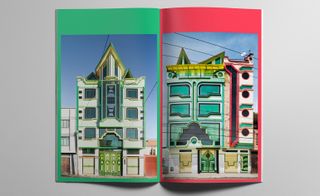
A spread from 'El Alto'
These conscious close-ups are described in a short essay by architectural designer and writer Winston Hampel who compares the publication to a ‘postcard or a dispatch’. The book is a ‘peephole’, which reveals yet also limits our view of Mamani’s kingdom, igniting our imaginations further.
This bright saddle-stitched book is produced by Edition Taube, an independent publishing house specialising in the production of artists’ works, based in Munich and Zurich. El Alto is a neat, visual slice of real-life fantasy – a photo book, an unusual object and a visual introduction to the world of Mamani.
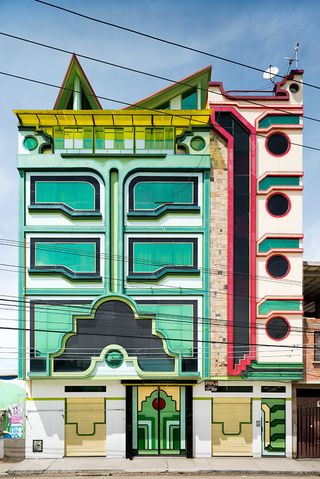
For inspiration, Mamani also looks to science fiction films, which influence the futuristic shapes and designs of his work
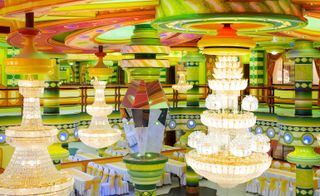
The fantasy ride continues inside Mamani's buildings, with ornate columns and glitzy chandeliers shown here in Salon El Rey Alexander
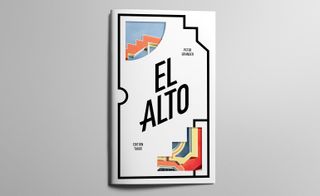
El Alto is Mamani's hometown in Bolivia. As well as Bolivia's second largest city, it is the highest in the world, and home to approximately 1.6 million people
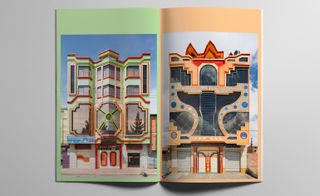
Photographer Peter Granser closely frames the buildings to celebrate the quirky features of Silvestre's signature architectural style
INFORMATION
El Alto is published by Edition Taube, €17. For more information, visit Edition Taube's website
Wallpaper* Newsletter
Receive our daily digest of inspiration, escapism and design stories from around the world direct to your inbox.
Harriet Thorpe is a writer, journalist and editor covering architecture, design and culture, with particular interest in sustainability, 20th-century architecture and community. After studying History of Art at the School of Oriental and African Studies (SOAS) and Journalism at City University in London, she developed her interest in architecture working at Wallpaper* magazine and today contributes to Wallpaper*, The World of Interiors and Icon magazine, amongst other titles. She is author of The Sustainable City (2022, Hoxton Mini Press), a book about sustainable architecture in London, and the Modern Cambridge Map (2023, Blue Crow Media), a map of 20th-century architecture in Cambridge, the city where she grew up.
-
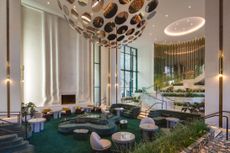 Wallpaper* checks in at the refreshed W Hollywood: ‘more polish and less party’
Wallpaper* checks in at the refreshed W Hollywood: ‘more polish and less party’The W Hollywood introduces a top-to-bottom reimagining by the Rockwell Group, capturing the genuine warmth and spirit of Southern California
By Carole Dixon Published
-
 Book a table at Row on 5 in London for the dinner party of dreams
Book a table at Row on 5 in London for the dinner party of dreamsRow on 5, located on the storied Savile Row, emerges as a perfectly tailored fit for fans of fine dining
By Ben McCormack Published
-
 How a bijou jewellery salon in Monaco set the jewellery trends for 2025
How a bijou jewellery salon in Monaco set the jewellery trends for 2025Inside the inaugural edition of Joya, where jewellery is celebrated as miniature works of art
By Jean Grogan Published
-
 How a sprawling new book honours the legacy of cult photographer Larry Fink
How a sprawling new book honours the legacy of cult photographer Larry Fink‘Larry Fink: Hands On / A Passionate Life of Looking’ pays homage to an American master. ‘He had this ability to connect,’ says publisher Daniel Power
By Jordan Bassett Published
-
 New Jay-Z coffee-table book dives into the Brooklyn rapper's archives
New Jay-Z coffee-table book dives into the Brooklyn rapper's archives'Book of HOV: A Tribute to Jay-Z' is a hefty tome for a hefty talent
By Craig McLean Published
-
 Discover Eve Arnold’s intimate unseen images of Marilyn Monroe
Discover Eve Arnold’s intimate unseen images of Marilyn Monroe‘Marilyn Monroe by Eve Arnold’, published by ACC Art Books, is a personal portrayal of an icon
By Hannah Silver Published
-
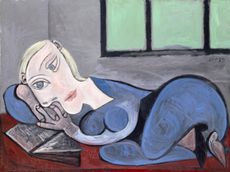 10 books culture editor Hannah Silver recommends this winter
10 books culture editor Hannah Silver recommends this winterLacking inspiration over what to read next? Wallpaper* culture editor, Hannah Silver, shares her favourite books
By Hannah Silver Published
-
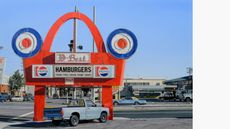 ‘Gas Tank City’, a new monograph by Andrew Holmes, is a photorealist eye on the American West
‘Gas Tank City’, a new monograph by Andrew Holmes, is a photorealist eye on the American West‘Gas Tank City’ chronicles the artist’s journey across truck-stop America, creating meticulous drawings of fleeting moments
By Jonathan Bell Published
-
 'I’m So Happy You Are Here': discover the work of Japanese women photographers
'I’m So Happy You Are Here': discover the work of Japanese women photographersSubtitled ‘Japanese Women Photographers from the 1950s to Now’, this new monograph from Aperture is a fascinating insight into a critically overlooked body of work
By Jonathan Bell Published
-
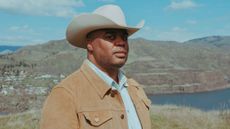 How the west won: Ivan McClellan is amplifying the intrepid beauty of Black cowboy culture
How the west won: Ivan McClellan is amplifying the intrepid beauty of Black cowboy cultureIn his new book, 'Eight Seconds: Black Cowboy Culture', Ivan McClellan draws us into the world of Black rodeo. Wallpaper* meets the photographer ahead of his Juneteenth Rodeo
By Tracy Kawalik Published
-
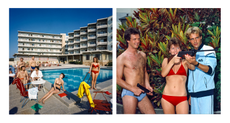 ‘Package Holiday 1968-1985’: a very British love affair in pictures
‘Package Holiday 1968-1985’: a very British love affair in pictures‘Package Holiday’ recalls tans, table tennis and Technicolor in Trevor Clark’s wistful snaps of sun-seeking Brits
By Caragh McKay Published